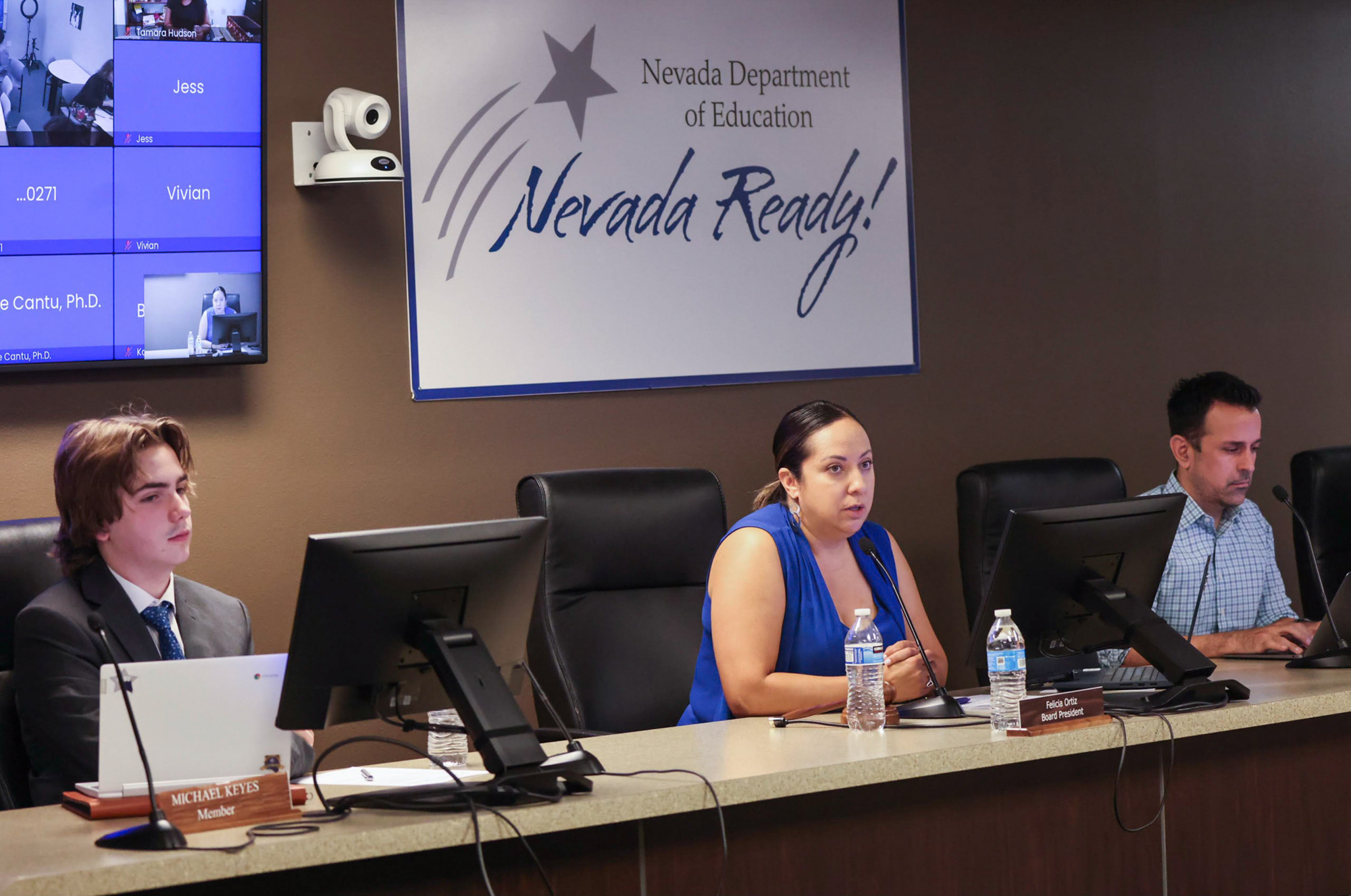State board moves target date for later high school start times to 2025

The State Board of Education voted Thursday to move forward with a proposed regulation to address high school start times earlier than 8 a.m. but changed its target implementation date from next school year to the 2025-26 school year to gather more data and public input on the shift before the policy is finalized.
Under the latest version of the regulation, public high schools that begin prior to 8 a.m., including charter schools, would be required to provide alternative options to families and students aimed at addressing potential negative impacts of early start times on student health, well-being and academic performance — though the draft doesn’t specify what those options could look like.
Other changes made to the draft regulation language since the board’s last meeting on Sept. 6 include clarifying that the change would only apply to public high schools with start times before 8 a.m. A previous version of the regulation stated that it would apply to all schools with start times before 8 a.m.
The new version also increases the number of charter schools and schools within each district that should be in compliance by the first year of implementation from 25 percent to 35 percent.
The draft regulation includes a waiver that would be available to schools that “face unique challenges in modifying their start times.” But the draft regulation does not outline the requirements to receive the waiver.
The proposal is part of an effort by State Board of Education President Felicia Ortiz to push back high school start times to address sleep deprivation among teens. In the Clark County School District (CCSD), high schools generally start classes at 7 a.m.
According to the Centers for Disease Control and Prevention, shifts in adolescents’ biological rhythms during puberty cause teens to become sleepy later at night and to need to sleep later in the morning.
A 2014 study by the American Academy of Pediatrics concluded that school start times of 8:30 a.m. or later would benefit teen students’ physical and mental health, safety and academic achievement.
The next step in the process is to send the draft language to the Legislative Counsel Bureau for review. After the board receives an updated version, it will hold a hearing where the public will get another chance to weigh in on the policy. If the policy is approved by the board at that meeting, it would then move forward to the Legislative Commission — a body of state lawmakers who approve executive branch agency regulations — for final approval.
The vote came after the board heard from several superintendents, Clark County school officials, students and community members concerned about unintended consequences.
During a recent Clark County School Board meeting, district staff estimated that implementing the regulation could cost as much as $145 million to pay for additional bus drivers and other transportation costs. Ideas suggested to keep expenses down when complying with the changes include cutting busing for students who live within 5 miles of their campuses, and to those who attend magnet schools and career and technical academies. District staff did present one way that the district could get into compliance with the regulations without any additional cost.
“The State Board of Ed has not, to date, seriously considered the financial burden on district operations or on families’ pocketbooks when they're forced to seek additional child care,” CCSD lobbyist Patricia Haddad said at the meeting.
She also raised concerns about language in the draft directing school districts to survey their community on the proposed regulation after the fact when “it'll be too late to change anything as the damage will essentially already have occurred.”
In a submitted written comment, the Education Support Employees Association — the union that represents CCSD support staff — asked the board to pause its efforts so it can work to address the potential ramifications.
“It seems irresponsible to impose this unfunded mandate, especially without knowing the impact it will have,” the union wrote. “High school students could end up walking 5 miles and will need to leave earlier which negates the later school start time. Some students will choose to just not attend if it comes down to walking five miles.”
The board heard similar concerns in written comments from Rick Harris, executive director of the Nevada Association of School Boards, Lincoln County School District Superintendent Pam Teel, and several students from Spring Creek High School in Elko County. Students there start school at 7:15 a.m. and end at 3 p.m.
One student, George Thomas, said after school, he goes to cross-country practice and gets home around 5:30 p.m., which already leaves him and his friends with little free time outside of school.
“We already stay up until around 11 every night and adding 45 minutes will not help,” he said.
Board Vice President Katie Dockweiler, who led the meeting in Board President Felicia Ortiz’s absence, said while school districts aren’t in favor of the proposed regulation, “the majority of the public comment that we've received from parents and students has been favorable.”
During the board’s discussion, board student member Michael Keyes cited a waiver that could be granted to certain schools that have challenges with complying with the regulation, and suggested Elko County School District could be eligible. The rural school district has a four-day school.
He added that his high school, Pahrump Valley, in the Nye County School District starts class at 8:15 a.m. and lets students out at 2:16 p.m. While he said he’s not involved in many after-school activities, he felt that students still have ample time for clubs, sports and other after-school activities.
“So this is possible. It's just a little difficult, and I think we can do difficult things,” he said.
Board member Tim Hughes suggested launching a statewide survey to collect more public feedback before the board forwards the draft regulation language to the Legislative Counsel Bureau. He also worries that the proposed regulation would lead to “unintended consequences” for elementary and middle schools.
Board member Maggie Carlton said while she isn't fully in support of the proposed regulation, she likes that it’s gotten more attention and said she would like to see it move forward while more data and feedback is being collected.
“This isn't the final word,” she said. “Regulations can be rewritten numerous times. I would hate to keep postponing this, because sooner or later, we’ve just got to get this done and do something else.”
